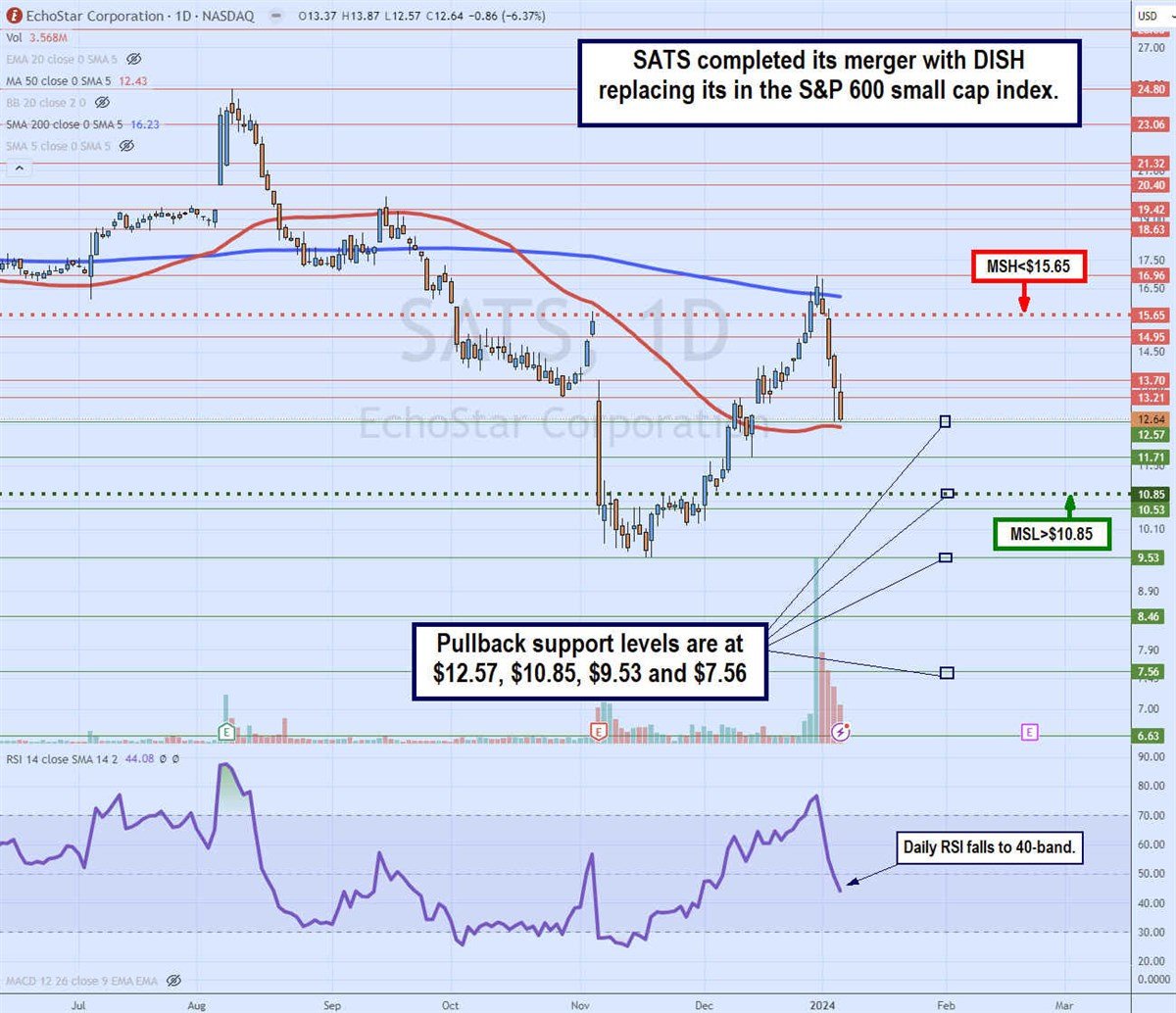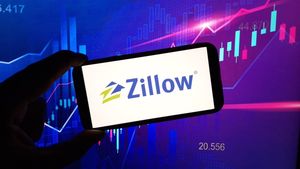
Satellite network operator EchoStar Co. (NASDAQ: SATS) completed its merger with broadband and pay-tv services provider DISH Network Co. (NASDAQ: DISH) on December 31, 2023. Together, they formed the EchoStar-DISH network, a communication services sector company focused on providing global connectivity solutions. The merger also provides DISH a lifeline for funding to finance its continued NASDAQ: TMUS">5G network buildout. However, with DISH continuing to lose legacy pay-tv subscribers while still trying to build out its wireless network, investors wonder if the synergies with the combined company will strengthen or weaken EchoStar.
The second time around
The combination of EchoStar and DISH Network is not a new concept. EchoStar was formed in 1980. DISH was a subsidiary that grew to become a major satellite TV provider that provided an alternative to cable TV. It also enabled consumers in rural areas to receive TV programming. EchoStar continued to grow its satellite network. They decided to spin off DISH Network in 2008 as a standalone company in a strategic shift. EchoStar continued to focus on manufacturing satellite communications technology and developing equipment for DISH Network and other customers.
Lifeline for DISH
DISH Network has seen its legacy pay-TV business continue to shrink as the "cord-cutting" trend continues. Its niche is providing pay-TV and wireless broadband services to rural customers whose cable companies lack last-mile service. DISH acquired Boost Mobile as part of the requirement for the FCC to approve the T-Mobile US Inc. (NASDAQ: TMUS) merger with Sprint.
DISH upheld its requirement to have its 5G network available to over 70% of the U.S. population in 2023. DISH has already spent $ 5.1 billion on its 5G network buildout, but the completion will require more funding to build between 20,000 and 25,000 additional cell towers. The additional cost estimates range between $4 billion and $5 billion to complete. DISH Network must raise at least $1 billion to survive through 2024. DISH lost 26 cents per share, and revenues fell 9.8% in its Q3 2023 earnings report. Its net pay TV subscribers dropped by 64,000 for a total of 8.84 million, comprised of 6.72 million DISH TV and 2.12 million SLING TV subscribers. The merger is good news for DISH, as it enables the company to raise funds. Get AI-powered insights on MarketBeat.
The new EchoStar
EchoStar had acquired Hughes Communications in 2011. Its EchoStar-DISH network combines the company assets and operates under EchoStar. EchoStar operates a fleet of 9 Ku-FSS, Ka-FSS and S-band MSS commercial geosynchronous satellites serving media and broadcasters, U.S. government and military and enterprise customers. It recently launched its next-generation JUPITER 3 (EchoStar XXIV) ultra-high density satellite (UHDS), boasting significantly more capacity for converged terrestrial and non-terrestrial services. It doubles the capacity of the Hughes JUPITER satellite fleet. The addition of DISH adds its 5G network, Sling TV, Boost Mobile, Boost Ultra and its legacy Dish TV business. EchoStar replaced DISH in the S&P 600 small-cap index on January 2, 2024. Check out the sector heatmap on MarketBeat.
Two companies for the price of one
The CEO of EchoStar, Hamid Akhaven, will also be president and CEO of DISH. He will oversee all aspects of the company's video services and wireless businesses and its subsidiaries. Akhaven has stated that the purpose of the merger was to bring ubiquitous connectivity to people, enterprises, and things everywhere. He believes the combined company. The FCC clearly agrees that consumers will benefit from the merger. The question is, will investors also benefit?
It appears you are getting two companies for the price of one. However, both companies are experiencing falling revenues. EchoStar saw revenues dip 17% YoY to $413.7 million in Q3 2023, while DISH saw revenues fall 9.8% to $3.7 billion, missing both top and bottom-line analyst estimates. But at least EchoStar is still profitable, making $500,000 or 4 cents a share in its last quarter.
EchoStar analyst ratings and price targets are at MarketBeat. EchoStar peers and competitor stocks can be found with the MarketBeat stock screener.

Daily death cross
The daily candlestick chart for SATS illustrates a daily Death Cross breakdown pattern. The daily 50-period moving average crossed down through the 200-period moving average (MA) on October 17, 2023, triggering the death cross. The 50-period MA resistance rejected a bounce attempt at $15.65, causing shares to plummet to a low of $9.53 on November 16, 2023. SATS formed a market structure low (MSL) trigger and breakout at $10.85 to stage a rally through the 50-period MA to retest the 200-period MA at $16.23 but rejected as the market structure high (MSH) sell triggered on the breakdown back under $15.65. SATS is attempting to hold support at the 50-period MA support at $12.43. The daily relative strength index (RSI) is falling back down through the 50-band. Pullback support levels are at $12.57, $10.95, $9.53 and $7.56.





